40+ Handy Tool Hacks For All The DIYers Out There
Humans are the most intelligent species to have walked the surface of this earth, which is evident in the things we have built and created that we use and see daily. Several other species roam the planet, but none of them display the same level of intelligence that we do. One of the most world-changing things proving that humans are super smart can be seen in the technology around us. We’re constantly displaying our intellectual superiority in our everyday lives, and power tools have driven us to create the world we live in today. This article will help you use these tools to the best of your abilities that will help you to contribute to the thriving world that humans have and will continue to build!
PVC sanding files
Sometimes, it is challenging to build the things we want due to a lack of tools and equipment. In situations like that, we have to wait for the right instrument, or we can think of another easy-to-access alternative.
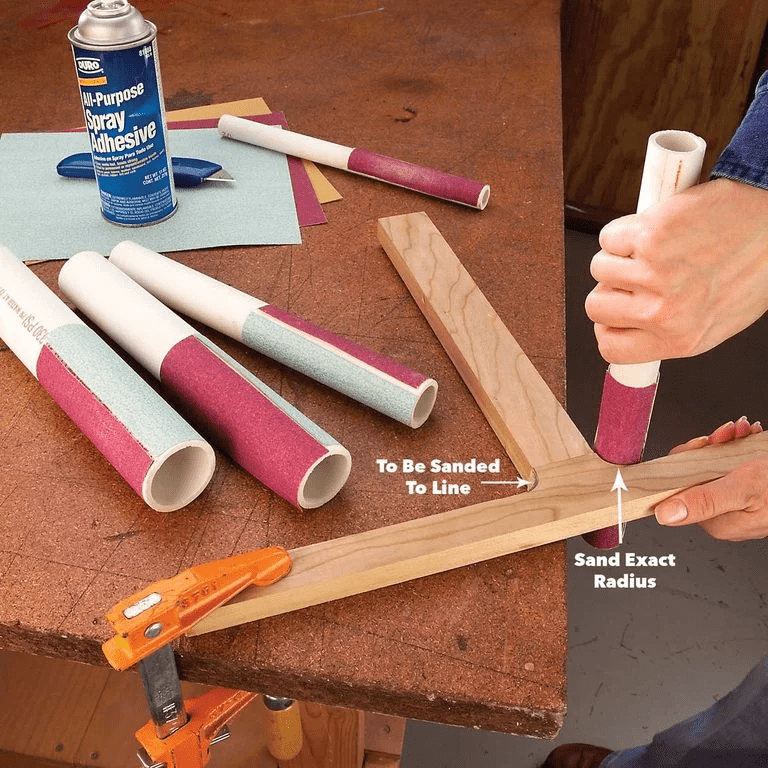
This PVC sanding paper is a good alternative because it allows you to sand out curves and edges that will prove difficult on a typical day. The tool consists of a pipe with sandpaper wrapped around it fixed with glue for proper grip.
Make your own Awl
One of the smaller but standard tools builders use to create beautiful structures is an Awl. These tools are used to make holes in drywall, and it is preferred because it doesn’t produce as much dust as the other tools used for making holes in drywall.

The problem is that most awls that are sold in stores are normally too small, but there is a solution to this. You can make your awl, and make it to a size that fits you. All you need to do is file a screwdriver with a disc sander or bench grinder.
Wrench for rounded bolts
One of the most annoying things that can happen when you’re trying to build something is realizing you don’t have the appropriate tools. In this case, it is a spanner. You need them to remove a bolt, but what do you do if you don’t have one?
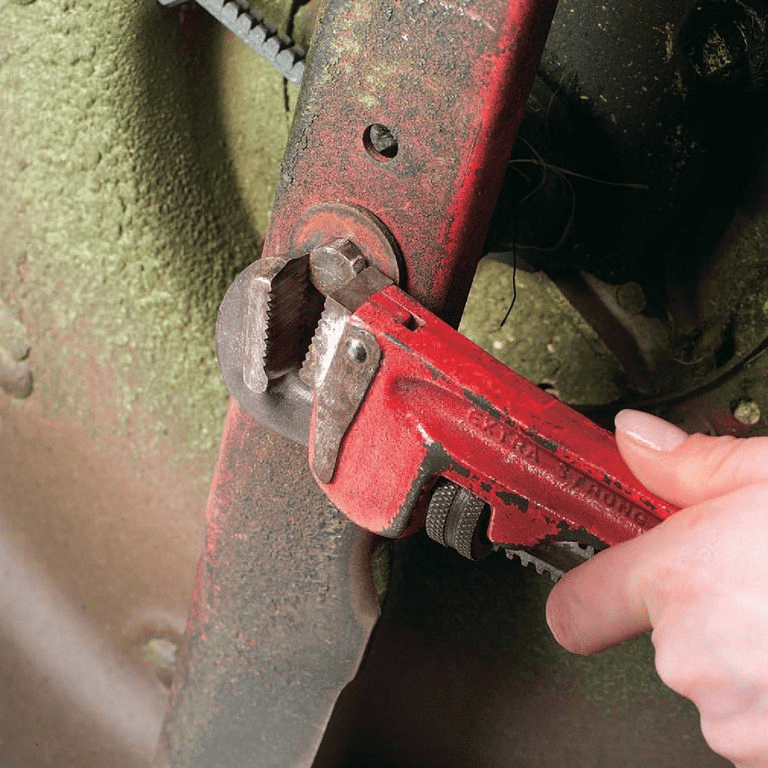
If you don’t have a spanner for a bolt, there are other things that you can do to remove it successfully. You can make use of a pipe wrench. A pipe wrench is a tool with a good grip, and it is sure to remove that stubborn bolt.
Hang your roofing tools
The house’s roof is one the most difficult places to work because it is hard to access, and moving around is not very convenient or safe. Having your tools with you on the roof can be dangerous as there is always a chance of them falling.

However, in the event where you have to do some work or fix something on your roof, there is a trick you can employ to prevent your tools from falling off. You can hang your tools with the use of springs clamps, as shown in the image above.
Clamp with a tie-down strap
Clamping boxes can be quite tricky sometimes when it comes to getting the measurement right, aligning the edges of the box together, and even holding the boxes in place while coupling the edges. What can be done to make this task easier, you might wonder?

There is an easy way to clamp your boxes together, and we can see that in the image above. You can hold the box together with the use of a ratchet tie-down strap. This makes it easier to clamp your box together.
Mix concrete with a rake
When you’re mixing concrete, it can be quite stressful doing it with a shovel or a hoe. You want the water and the powder to mix very well to form a proper concrete paste, and this can be difficult to achieve with a hoe.
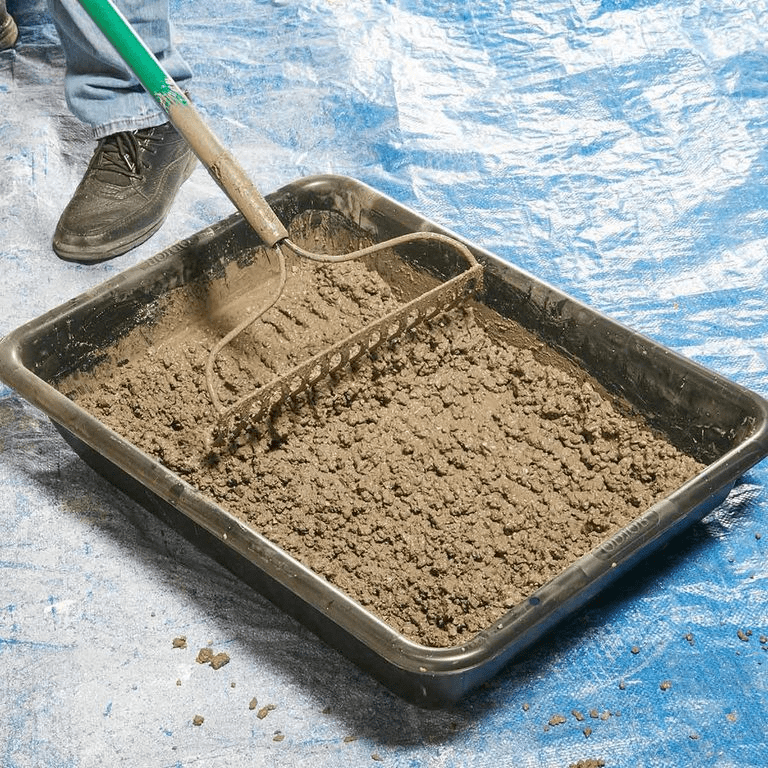
This image shows us an easy and alternative way we can mix our concrete, and it is with the use of a rake. The rake has a mouth like a fork, and it makes it easy to stir your water and powder into a proper paste.
Make mini roller covers
One of the issues we face when we are painting is the number and size of our rollers. Sometimes, we need more than one roller, especially when we’re using more than one painting, and getting multiple rollers can be costly.
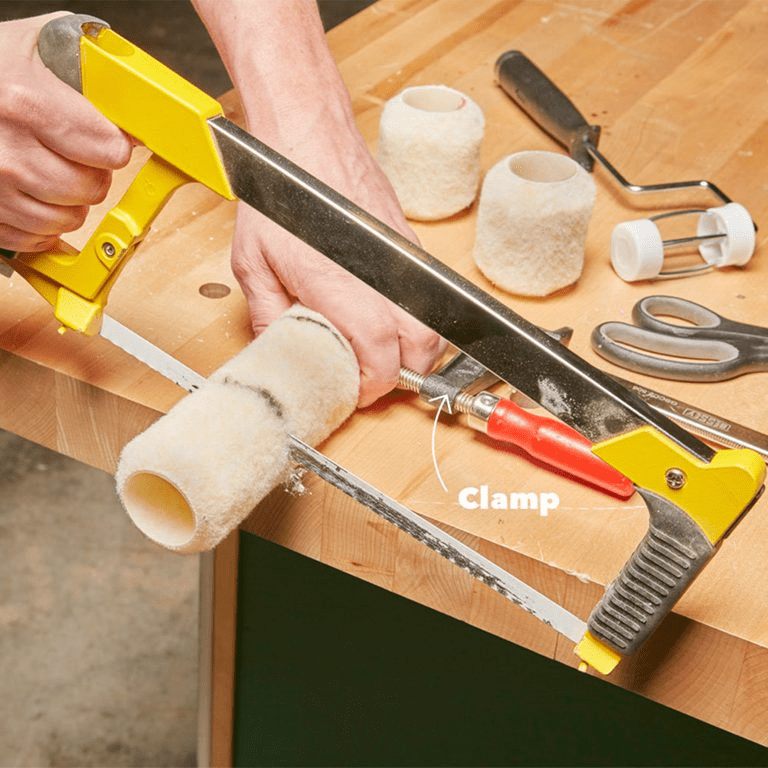
Instead of buying more than one roller, there is an alternative method that you can employ. You can simply buy a larger roller about 9 inches and cut it into smaller rollers that are about 3 inches in size. The good thing is, the rollers all have the same diameter and can use the same frame.
Use a level to extend your table saw fence
A table saw is a tool that is used to cut large and flat pieces of wood along a straight line. It can be difficult achieving these straight lines sometimes because the wood is not properly fixed on the table saw fence.
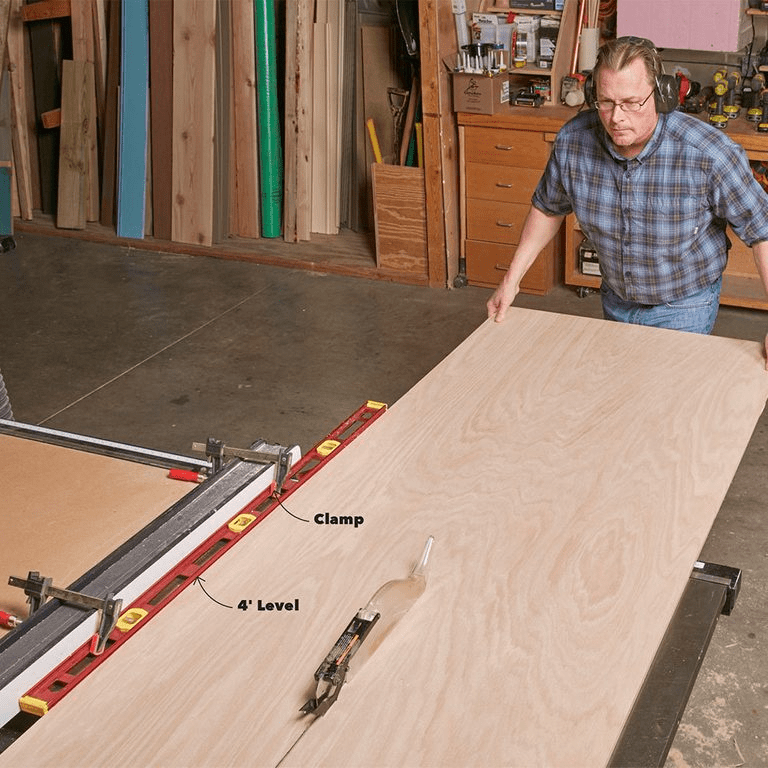
This image shows us a hack that will allow you to cut your wood straight. You can add a layer to your table saw fence to keep the wood in place. You can use a 4 feet level as the additional layer, as shown in the image.
Use a drill to dig through hard soil
One of the most challenging times of the year is the winter, and this is due to the sometimes harsh weather condition. During winter, everywhere is covered with snow, and even the ground is hard to dig due to the cold temperatures.
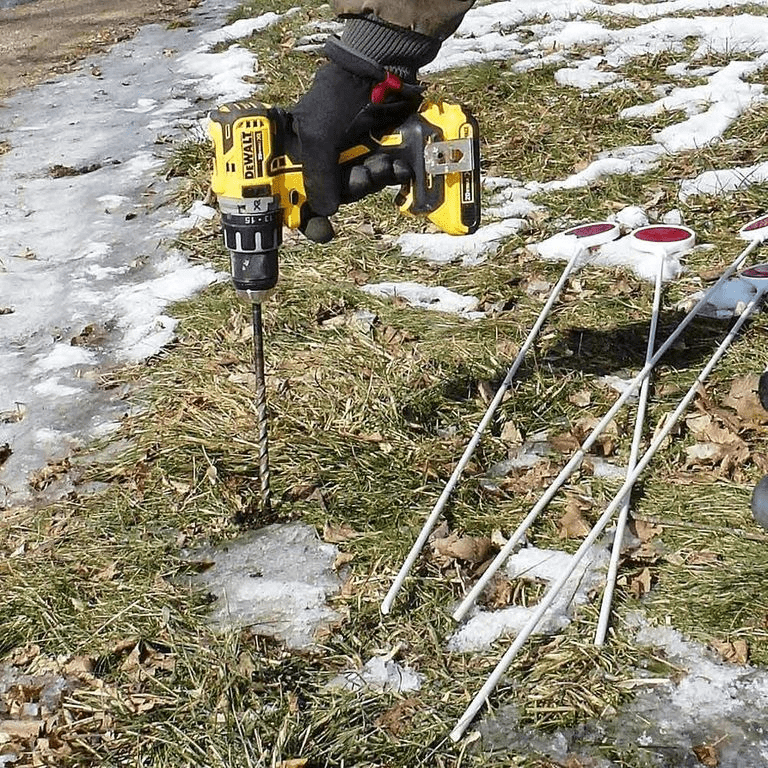
If you need to dig the ground up during winter, don’t bother using a shovel or digger, it will be difficult. Instead, you can use a hand drill. It will work perfectly and drill through the ground with ease. It is pretty much the same as drilling through a wall or wood.
Make a blade for cutting foam
For one reason or the other, you have at some point needed to cut a piece of foam, and it was probably messy because the foam left crumbs and dust everywhere for you to clean. Well, there is something you can do to prevent it from happening again.
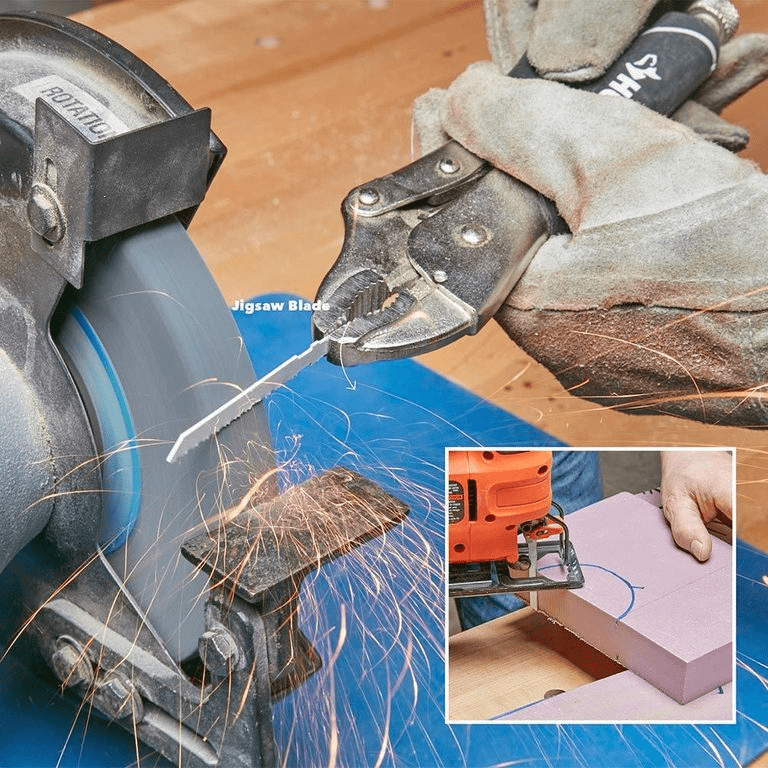
To cut foam, you can make use of a jigsaw blade, except you will need to make a slight alteration to the blade. You need to file the teeth of it. With this, you can easily cut through foam without leaving crumbs.
Lift doors with a flat pry bar
We might have to remove or lift a door in the house for whatever reason. Unlike how they sometimes look, doors are very heavy, and they can be even harder to lift once they’ve been fixed on the door frame.
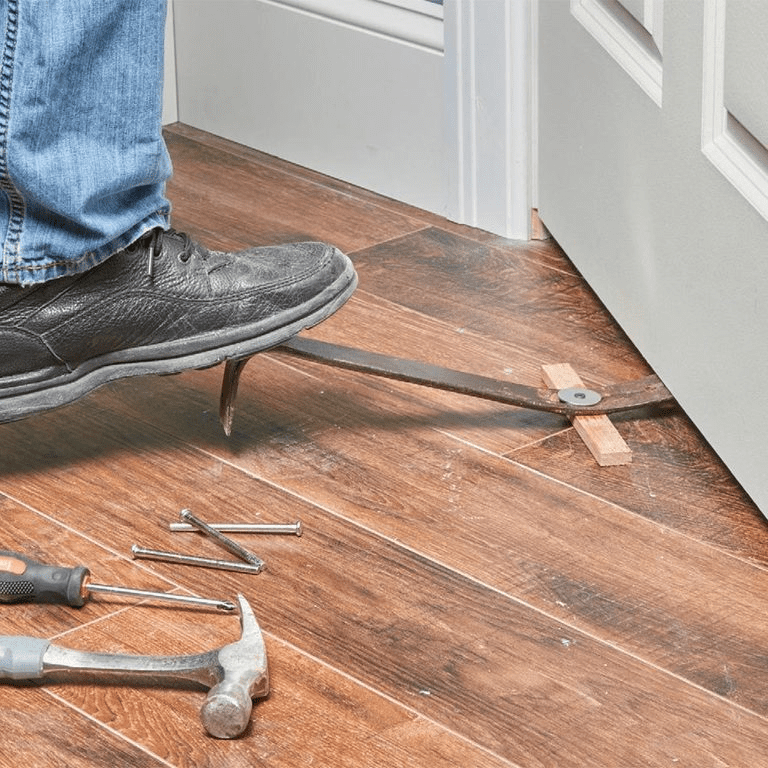
There is a simple and effective way that you can remove a door no matter how heavy it might seem to be. All you need is a pry bar. The curve makes a fulcrum on the ground, and you have enough space to apply pressure. You can also put something under the pry bar to further improve the fulcrum.
Hammer measuring stick
Taking a measurement is one of the things that we do almost every day, both consciously and unconsciously. We need a measuring tape to take measurements. However, it is not every day that we have the access to it.
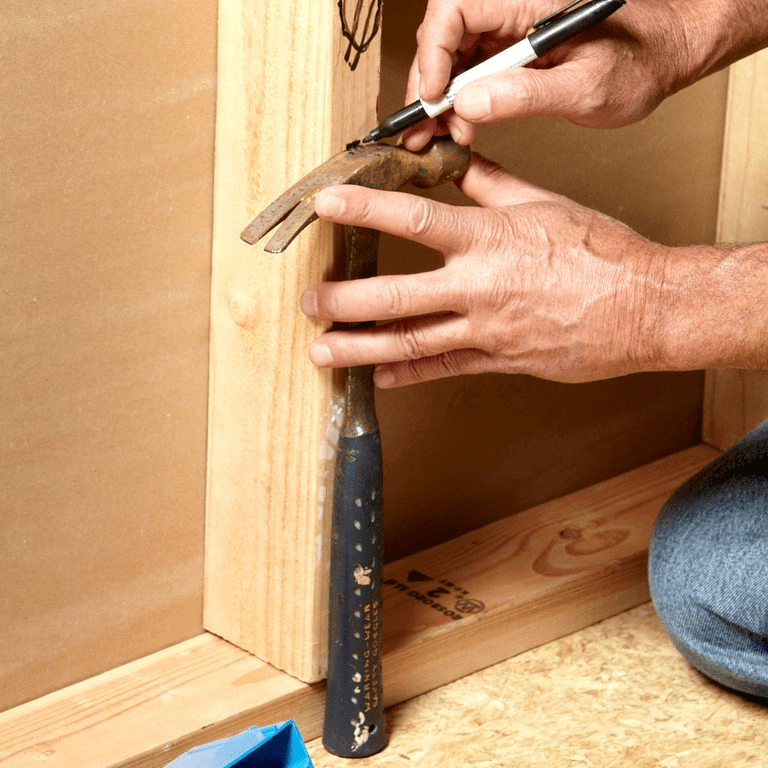
There are other tools and methods that we can use in place of a measuring tape, and one of them is a hammer. If you know the exact length of your hammer, you can use it to set markers if your measuring tape is out of reach.
PVC hammer holder
It is impossible to carry all our equipment on our person when working. However, there are some small tools that we constantly need and can be carried around with us while working. A hammer is one of those tools.
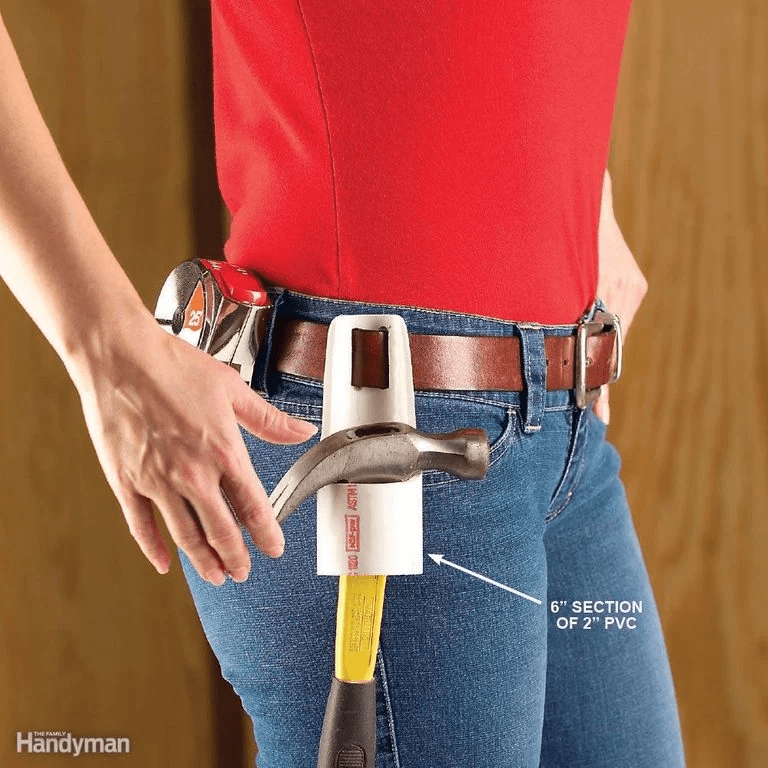
Some work belts don’t come with enough space for all the tools that we need but don’t worry. We have a hack for creating extra tool space on your belt. All you need is a PVC pipe. Cut one side of the pipe as shown in the image.
Quickdraw hammer storage
One of the most frustrating things that can happen while working is misplacing our tools or not having access to tools that we need at that exact moment. Hammers are one of those tools that have a way of disappearing from the workbench.
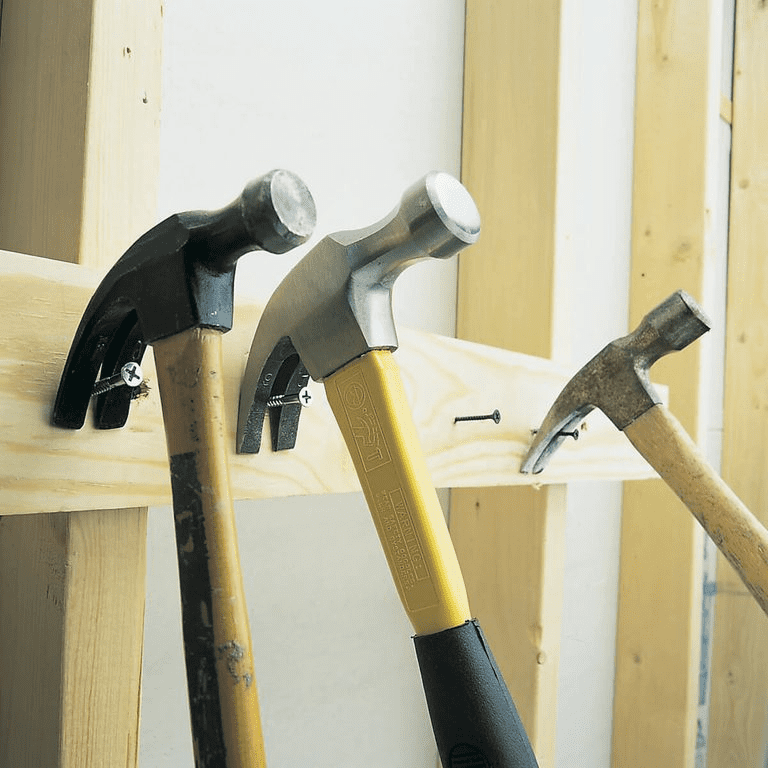
Now, you no longer have to worry about your hammer disappearing. The image shows a great way to keep your hammers around you at all times and ready for action. Get a long piece of wood, and fix nails into them to form a hammer rack.
More leverage for pulling nails
Sometimes, it can be difficult getting to some nails. It could be the position of the nail or the angle at which the hammer is placed. But at the end of the day, there is always insufficient leverage for the hammer.
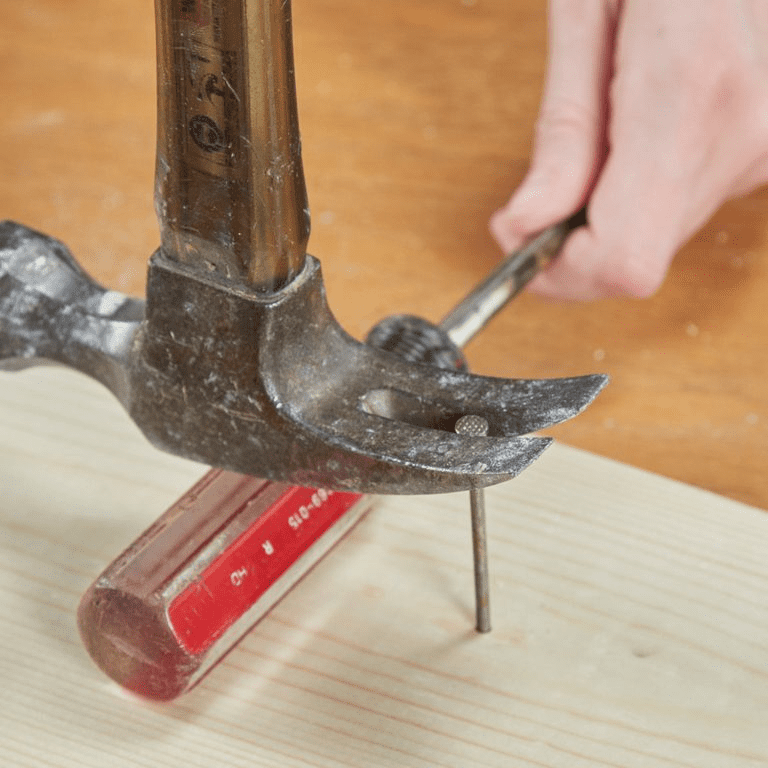
In a situation like this, you don’t need to worry. As the image depicts, all you have to do is provide better leverage for your hammer. You can do this by placing something beneath your hammer, and in this case, it’s a screwdriver.
Free finger saver
A hammer is one of the most used tools in the world, and it is very important for driving nails. One of the most painful work accidents is mistakenly driving the hammer into your finger instead of the nail.
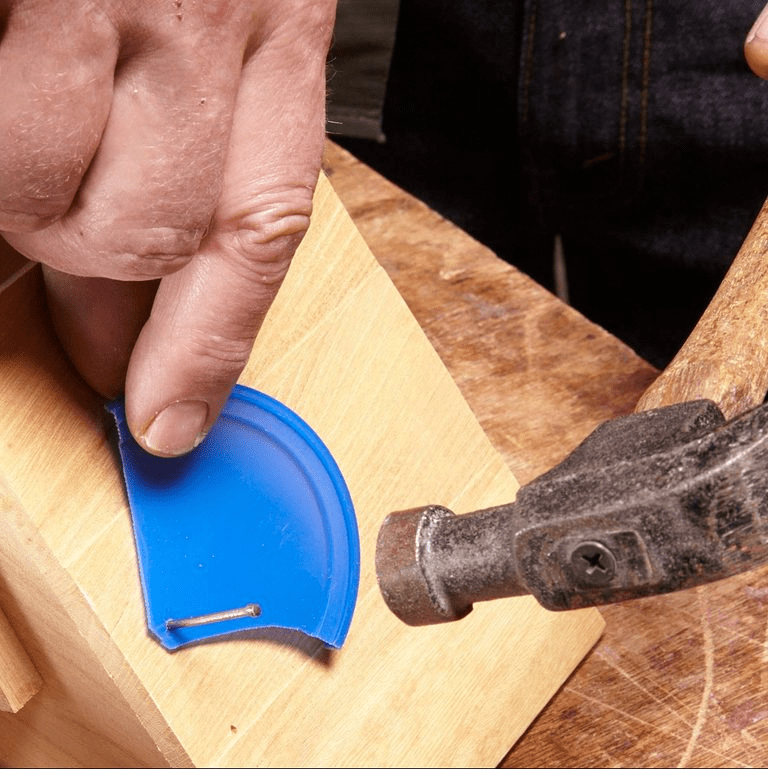
This is something that happens, especially when you’re using a small nail. To avoid experiencing the pain of a hammer on your hand, you can use a small plastic cover to hold the nail in place and then cut off the plastic.
Kitty litter pouch for tool protection
It can be annoying when you want to work, and then you check your toolbox and see that your metal tools have been damaged due to rust or other elemental conditions. Some steps can be taken to prevent this.
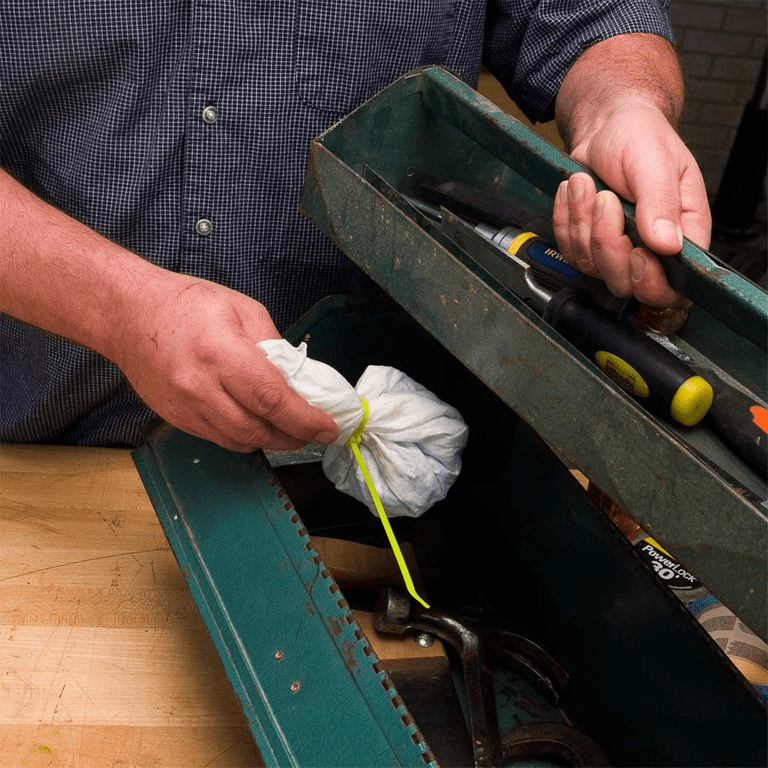
The image shows an effective way of keeping your tools safe inside the toolbox without fear of rust or damage from moisture. The simple solution here is to put silica crystal kitty litter in a pouch and place it in your toolbox.
Two sizes of brad nails in one gun
There are a lot of hacks that you can employ for different things, and these hacks aim to save time, reduce waste, make up for missing tools, and more. We have yet another way that you can save time while working.
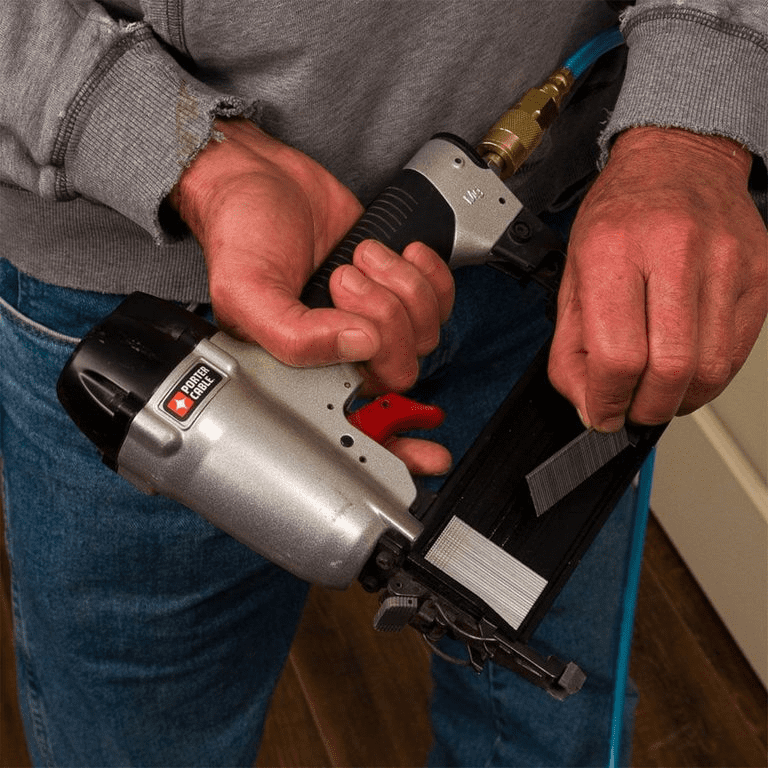
Nail guns make it easier for you to drive in nails without the need for a hammer, and you can further save time when using one. All you need to do is put two different sizes of nails in the magazine, and you can switch them out for different nails when you need to.
Caulk gun clamp
It can be challenging to hold them together or in place when working on small projects. In a situation like that, things can get messy and frustrating, and we might end up doing a lousy job. We can avoid this by adopting the hack below.
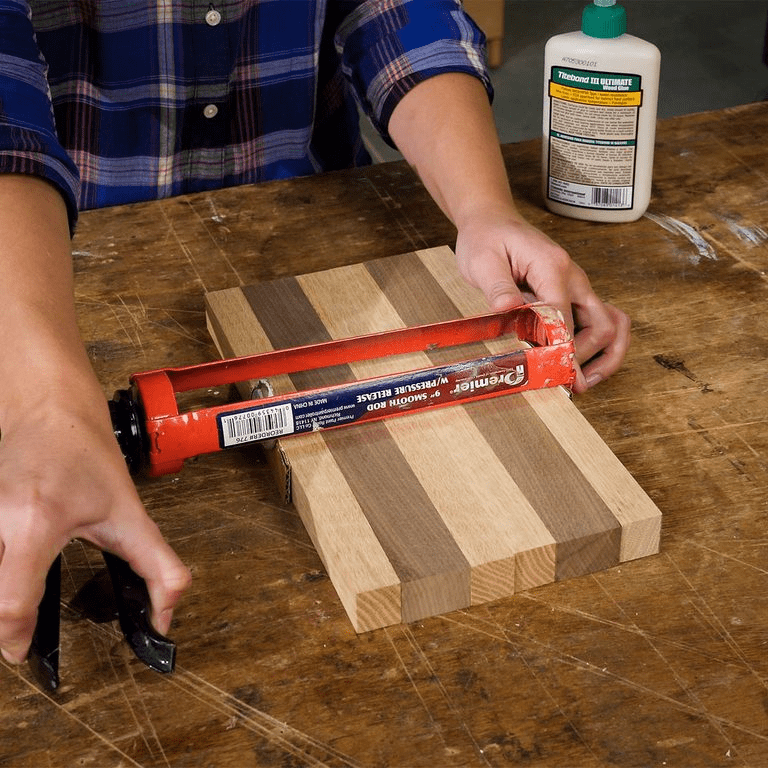
A caulk gun can come in handy when working on small projects. It might be difficult to hold small projects with proper clamps due to their size, but don’t worry. We can use a caulk gun instead, and it works perfectly.
Hammer cushion
Hammers are very useful tools that have been used to drive nails for several decades now. You can use a nail gun in place of a hammer, but there are instances where you might need to use a hammer exclusively.
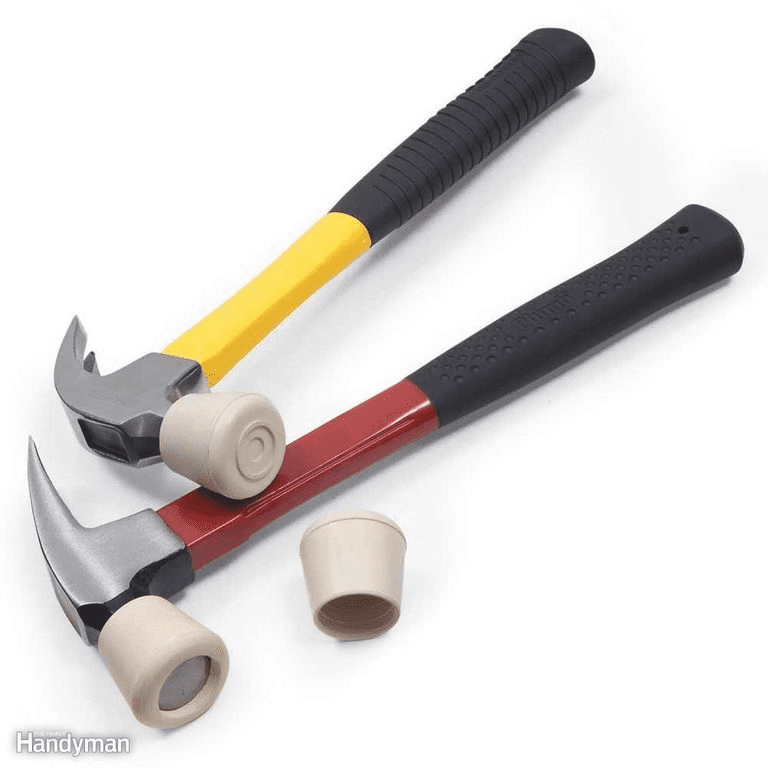
One disadvantage of using a hammer is it can leave marks on the surface you’re working on, especially if you miss the nail. To avoid this, you can cushion the head of your hammer with the rubber from your chair leg.
Check if your square is square
Drawing shapes seems easy and all, but it can be challenging to get the exact shape you desire, especially when you might have to cut out the shape. One of the standard shapes used is squares, and it can be hard to draw a perfect one.
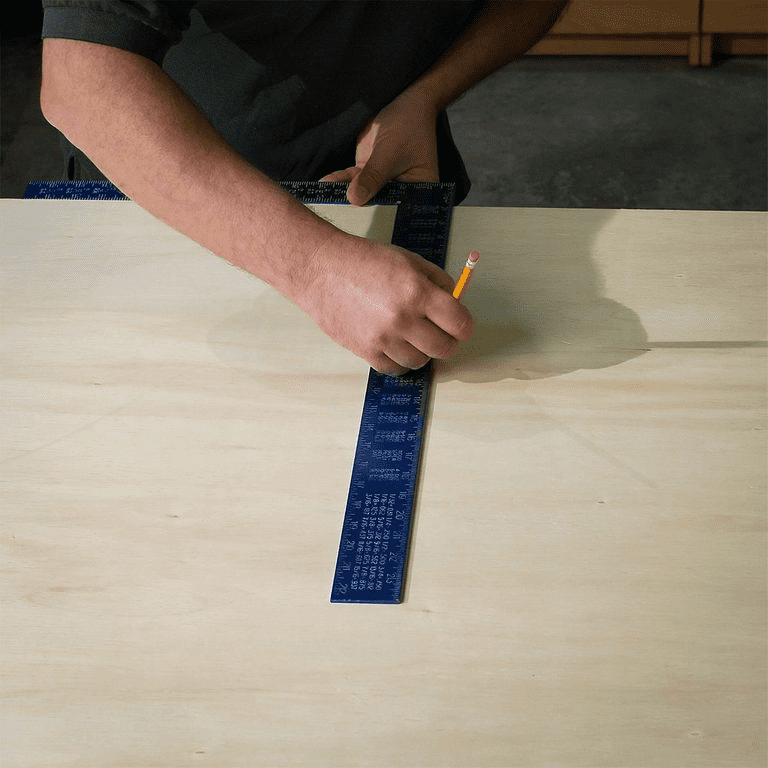
You can confirm if your square is a square. All you have to do is use the edge of a piece of factory-processed plywood to make the short side of the square. Mark a line along the long side of the square, then flip it. If the lines don’t match, then your square isn’t perfect.
How to fix a square
One of the tools that are important for getting an accurate measure is a square. The tool is shaped like an incomplete square with two sides coming together form a 90-degree angle. The square is not always perfect, though.

If you check your square and realize that it is not perfect, there is a way you can fix it. All you need is a hammer, an anvil, and a center punch, and you’re good to go. If the sides are wider than normal, punch the outer corner. If the sides are closer than they should be, punch the inner corner.
Lighted Screwdriver Hack
Most times, when we have to work with tiny screws and bolts, we have a hard time getting the screwdriver to fit into the screw because we can’t see it well. The solution is to shine more light on the project at hand.

You don’t need to toss your regular screwdriver to get one that comes with a light. Instead, you can make your screwdriver light up, and all you need to do is attach a small LED light to the shaft using tape.
Compressor Creeper
In the workshop, one of the challenges we face is moving our heavy equipment from one place to the other. Carrying things like compressors can be tough on the back, and an alternative needs to be put in place to avoid back pain over time.

We have a solution to this problem, and you don’t even have to spend extra money getting a trolley. You can simply use your mechanic creeper to transport heavy things around your workshop, like your compressor or other heavy power tools.
Saddles for sawhorses
Sometimes, after a long day of swinging and working our butts off, we notice that our sawhorses have put some abrasions or chips on the surface of the project that we are working on. You can prevent this from happening next time with this hack.
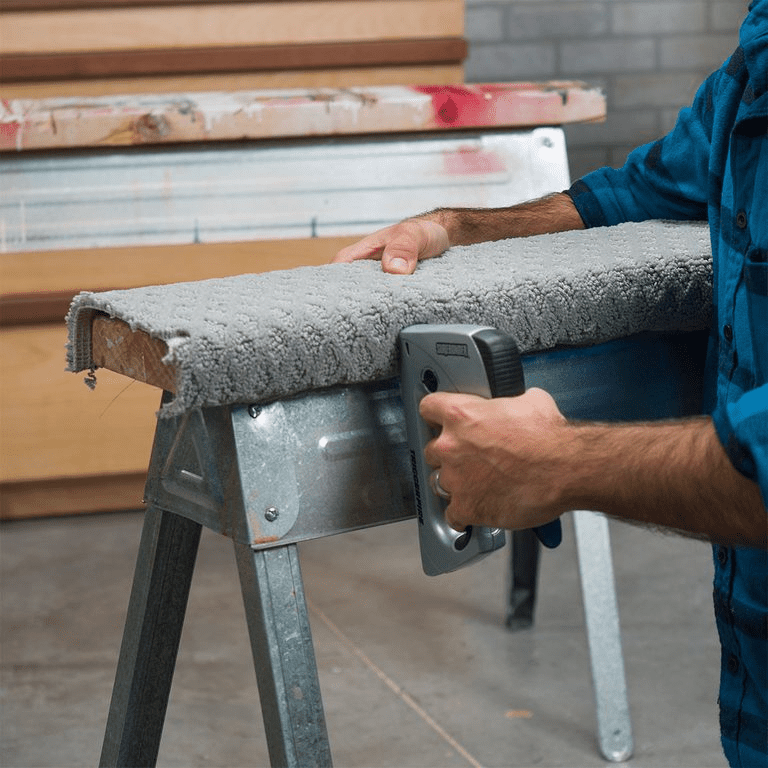
The image shows a great way you can safeguard your projects when working on your sawhorses. All you need to do is get a cover, maybe a rug or carpet, to serve as a saddle. You can secure the saddle with staples.
Bobby pin nail holder
The issue of hitting your fingers with your hammer while driving in a nail is one of the most common workplace accidents. We have already looked at one of the ways we can avoid this, so let’s look at yet another.
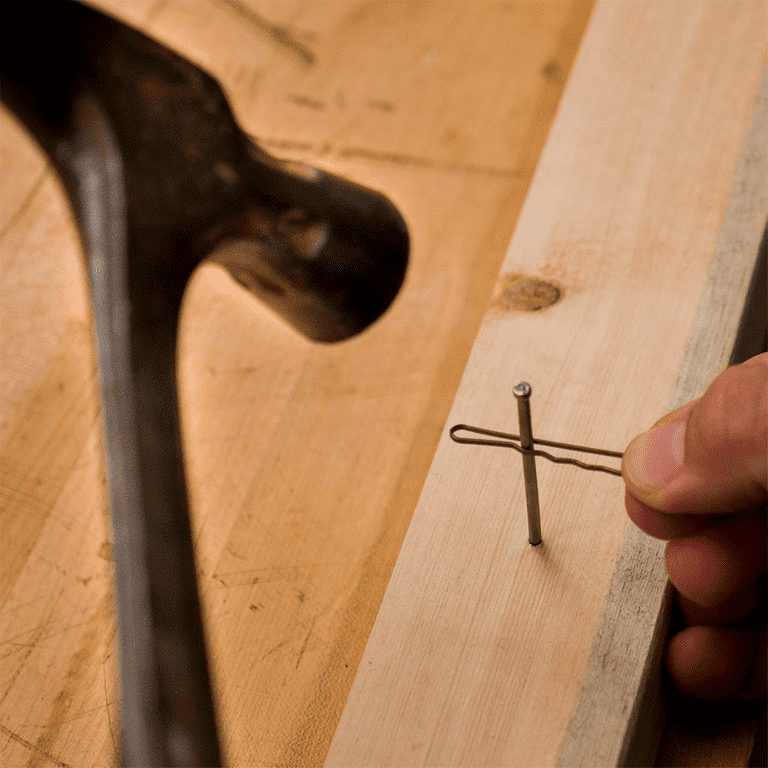
Another way you can safeguard your finger from the wrath of the hammer is with the aid of a bobby pin. You can hold your nail in place with a bobby pin instead of your fingers. This will prevent the hammer from coming anywhere near your hand.
Hooks for drill storage
Have you ever been in a situation where you have planned what you want to do in your workshop or whatever project you are working on, and then when you want to start or mid-way through, you realize your drill is missing?

That feeling can be very annoying, but we are here with a hack that will save you from that dilemma. The image shows strong hooks for hanging bikes, but they are instead used to hang drills. This is a very effective method for keeping your drill in the same place every time.
Vise-grips to pull nails
Hammers are designed for driving and pulling out nails, and they are very effective tools. We have all made use of hammers at some point in our lives, and they have been a blessing. But, what do we do when we don’t have a hammer but a nail to pull out.
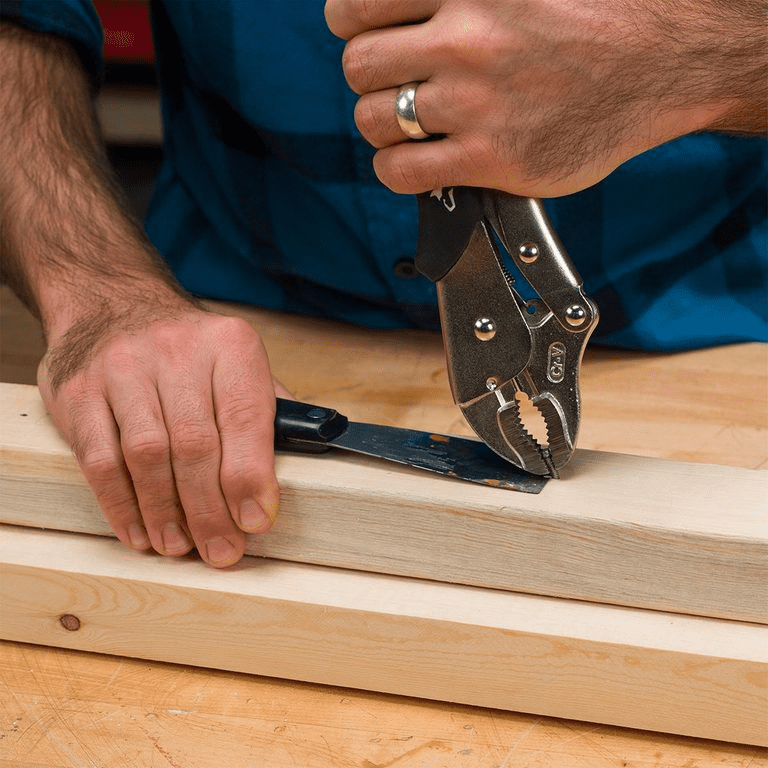
If you find yourself without a hammer, and you need to pull out a nail, don’t worry. You can use a vise-grip plier instead, and it will work like a charm. The vise-grip has a shape that grabs onto the nail firmly.
Circle gets the square
We might inevitably have to draw shapes when working, especially when we have to cut out things. It is easy to draw out shapes that consist of straight lines like squares, rectangles, triangles, and the like. But what about drawing circles and curves?
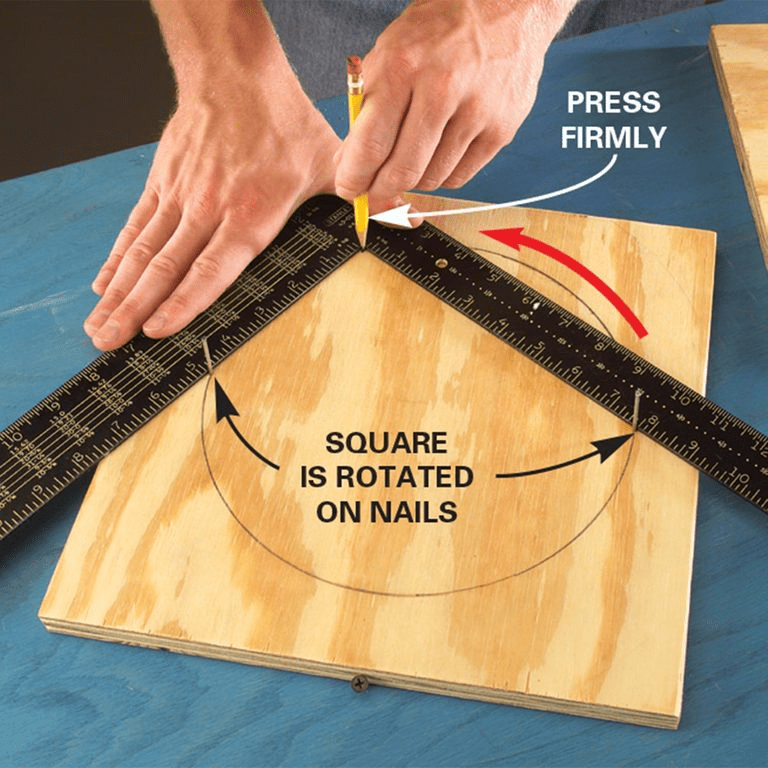
You can draw curves and circles easily with the aid of your square and nails. What you need to do is mark a diameter of your choice and place two nails at extremes, rotating your square around the nails with a pencil in the corner of the square.
Customized chuck key
Chuck keys are tools that allow you to tighten and loosen gear systems or whatever they are shaped for. One issue with the key is the grip and the length of the handle, which can be quite difficult to turn.

You can customize your chuck key by measuring the diameter and length of the handle and then make a matching hole at the end. Doing this saves you a lot of stress, and you’ll no longer have to scrape your fingers on the gears.
Flush-cutting hacksaw
When we want to get rid of trimming the flush on furniture, it tends to be a problem because we don’t want to trim too close to the surface and damage it. So, what can we do to get rid of the flush without damaging our surface?

The image gives us a nifty answer to that question. You can saw off flush without fear. All you need to do is wrap your hacksaw with tape at two points, then leave enough space between the two points as shown in the image. The tape will prevent your saw from scratching the surface of the wood.
Last-ditch nail pulling
Have you ever been in a situation where you wanted to remove a nail, and then the head of the nail breaks off? You probably left the nail there and gave up, but we have a hack here that can help you with that stubborn nail.
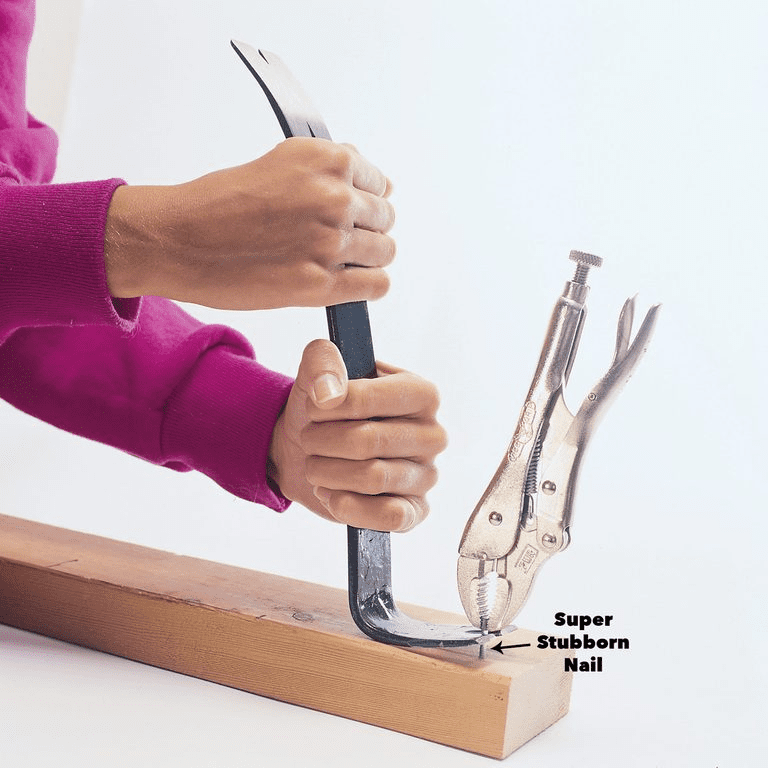
To remove a nail with a broken head, you need locking pliers and a crowbar. The locking pliers will serve as the new head of the nail, and you will lock it on the shaft of the nail. The crowbar will then be used to force out the nail.
Long-reach screwdriver
Sometimes, when we are using our drill, we discover that the drill is not long enough or can’t reach the point that we want it to reach. In a situation like this, there are some other methods that we can use.
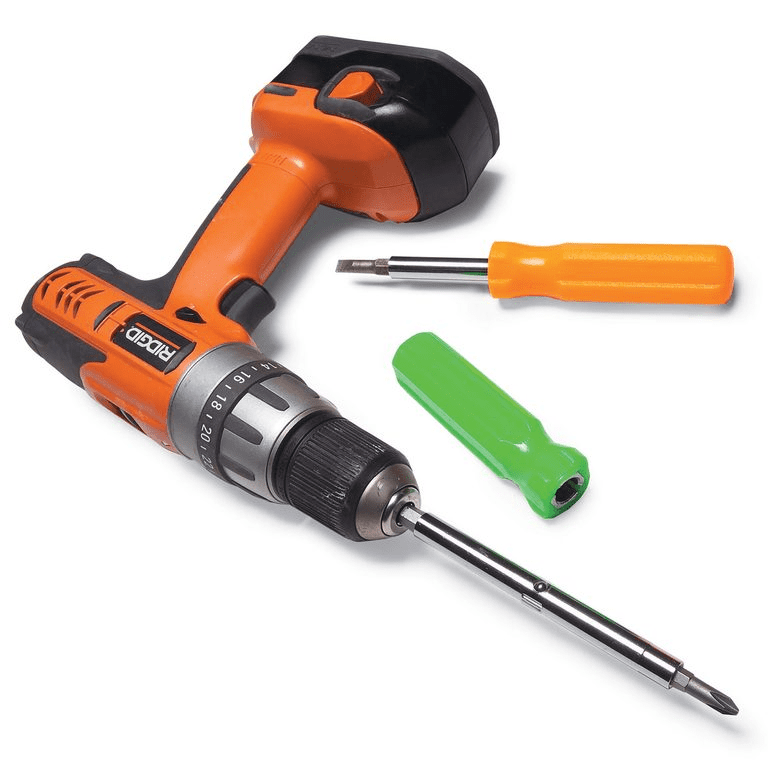
One of these methods and probably the most straightforward one is the use of a multi-bit screwdriver. All you have to do is remove the drill from your cordless drill and replace it with the shaft of a multi-bit screwdriver.
Long-lasting utility blade
One of the most used tools is blades. We use them for several purposes around the workshop from cutting pieces of measurements to making marks, and several other things. The only issue is the blades tend to get worn out.
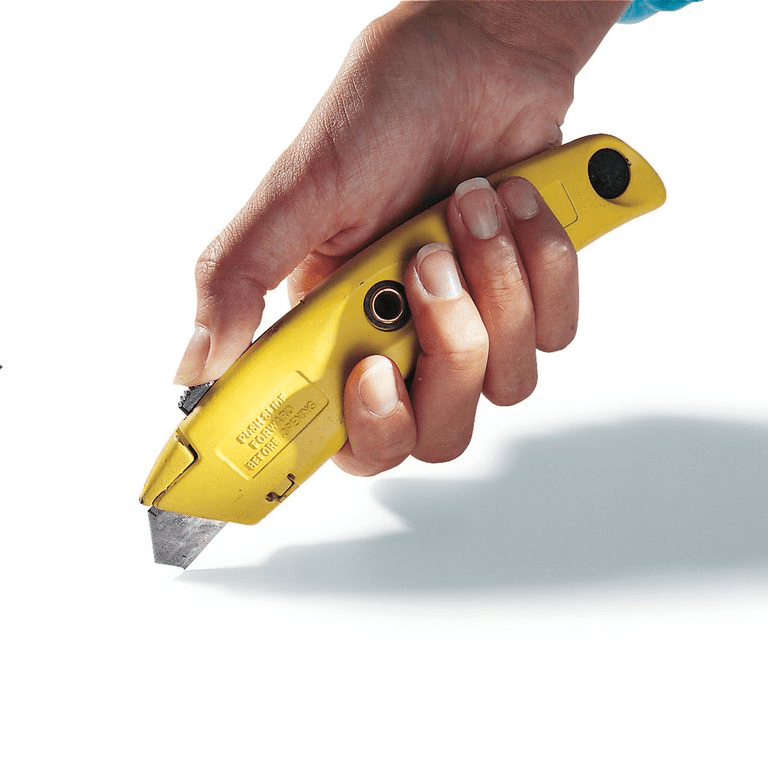
You don’t have to constantly change your blades if you’re using longer-lasting utility blades. These blades come in cartridges, and all you have to do is break off any part of the blade that has worn out and replace it.
Mini drywall saw
When working on your drywall, there are some spots or places that are hard to reach and require smaller equipment. In the absence of these tools, some other things can be used. There is always an alternative if you use your imagination.
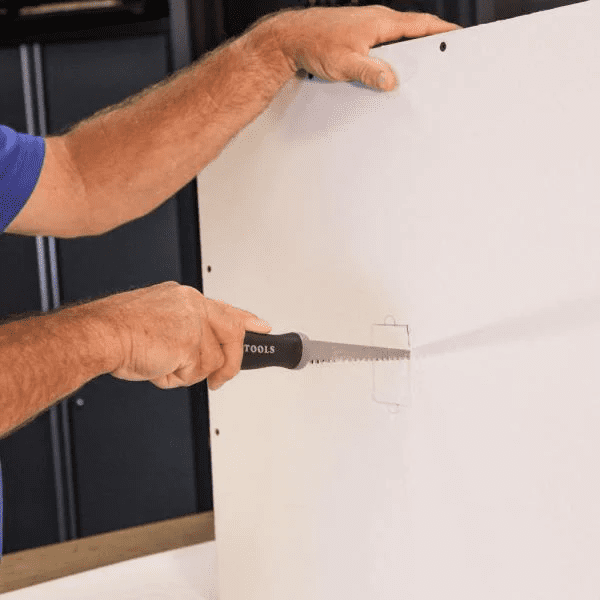
Take this mini drywall saw as an example. It is simple and homemade and doesn’t require any extra cost. All you need to do is get a jigsaw blade and fix it into a piece of wood of your choice, and you have a mini drywall blade.
No-dent nail finishing
When using the hammer, it can be quite difficult to control the way we swing and where the hammer lands, and this can cause us to damage the surface on which we are driving the nail into. We don’t need more things to fix.
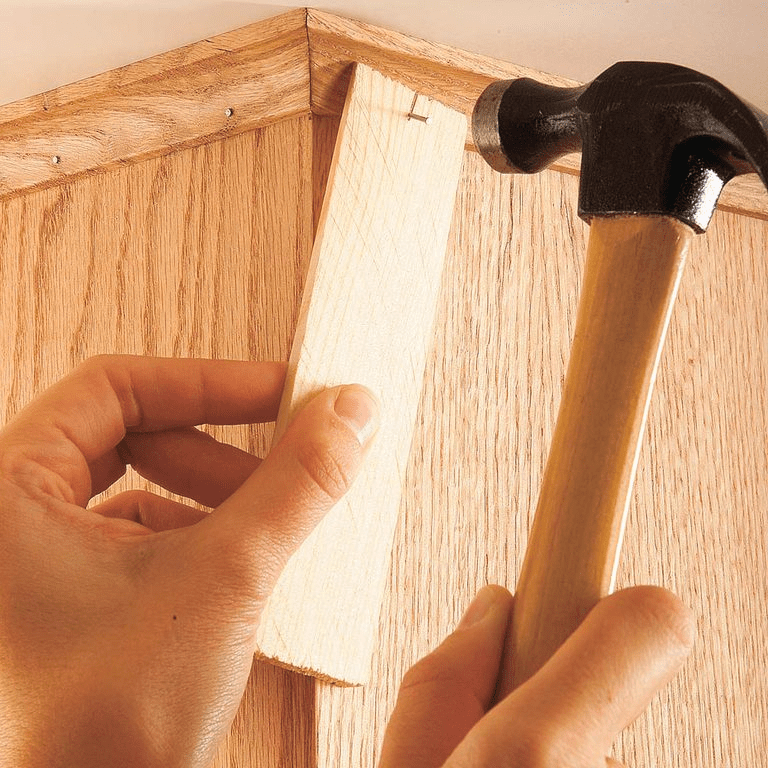
We can prevent denting or damaging the surface of our project with the aid of a wood shim. Cut out a wood shim, and then make a laceration from one edge of the shim to the position of the nail to help you work more efficiently.
Quick woodworking file
Sandpaper has been a blessing to us, and it is one of the most used materials for smoothing out surfaces. However, there can be times when we can’t use sandpaper because it won’t fit into those hard-to-reach spaces.
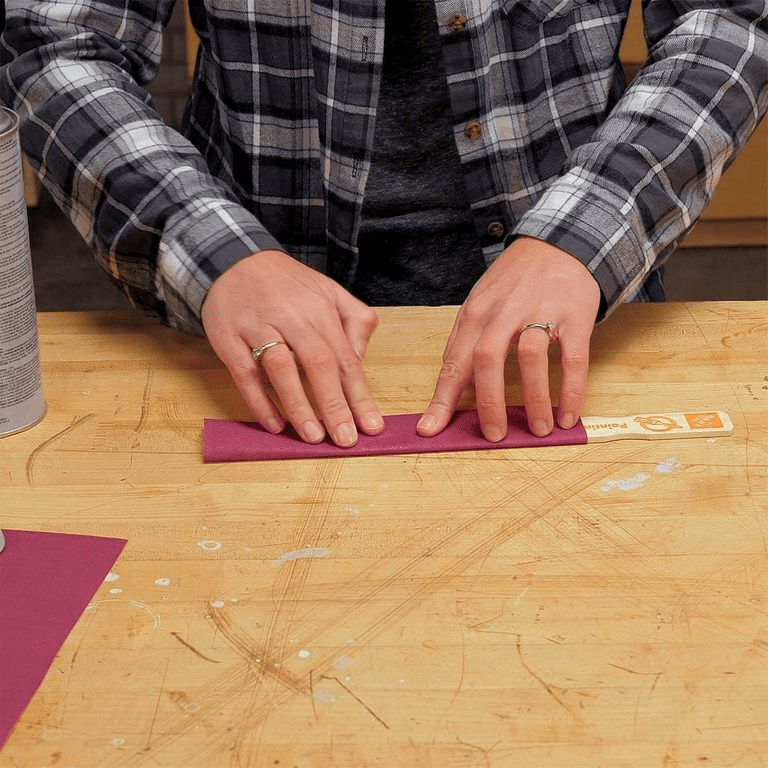
With this woodworking file, we can now access tight corners and other crevices that we can’t normally reach. To make it, you need sandpaper, a paint stir stick, and glue. You will glue the sandpaper to the stick and you’re ready.
Custom pads for mechanic’s vise
The mechanic vise is a very effective tool for holding projects in place while working on them. There are instances when what we want to work on is too small for the vise, and it’s not going to stay well no matter how hard you try.
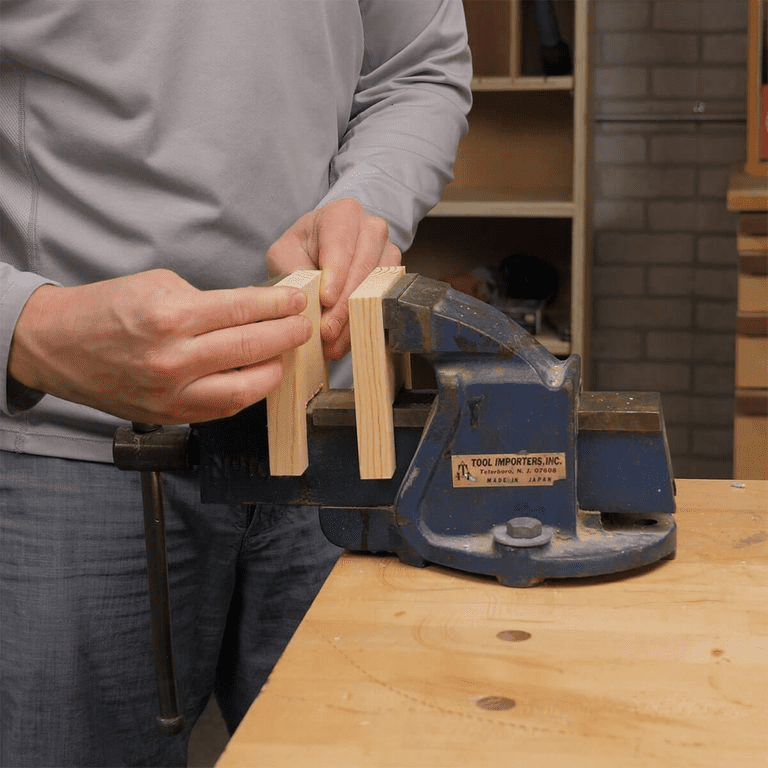
There is something that you can do to ensure even small projects are held together by the vise, and that is the introduction of custom pads. You can make pads using wood blocks and use glue to fix them on.
More planing, less exercise
One of the most stressful exercises in the workshop is planing longboards. You need to ensure the board is well planed and all the surfaces are smooth and equal. This usually involves you checking the infeed and outfeed side constantly, and it can be stressful.
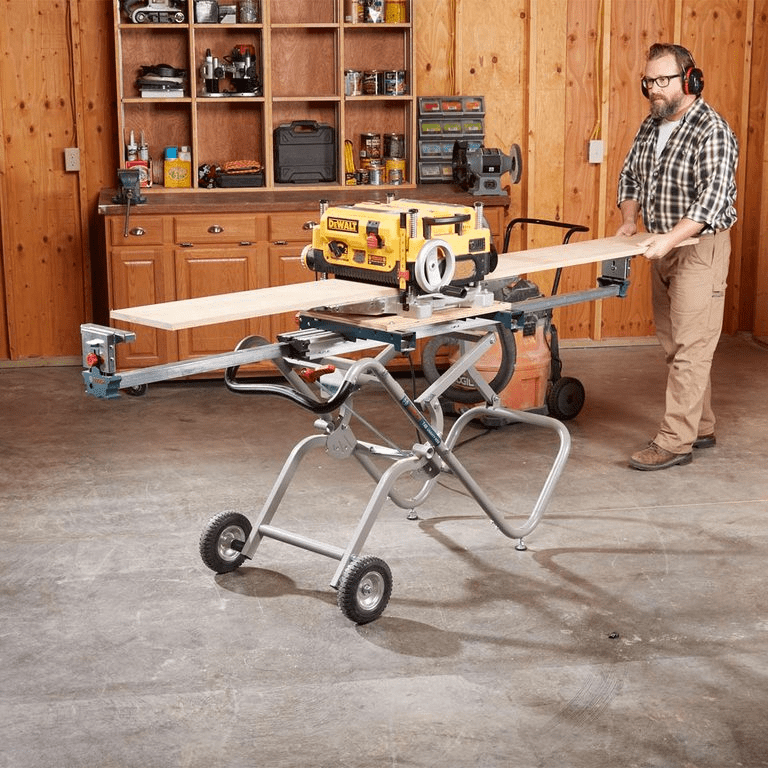
You can ease this stress by following this method instead; attach your portable planer to a board, then attach the board to a miter saw stand. The stand’s board will then serve as the infeed and outfeed for planing.
Always know where to find your paint can opener
One of the most irritating things that happen to us when working is when we have to start looking for our tools all over instead of using that time to make progress in our projects. The same thing happens when we mess with our paint can opener.
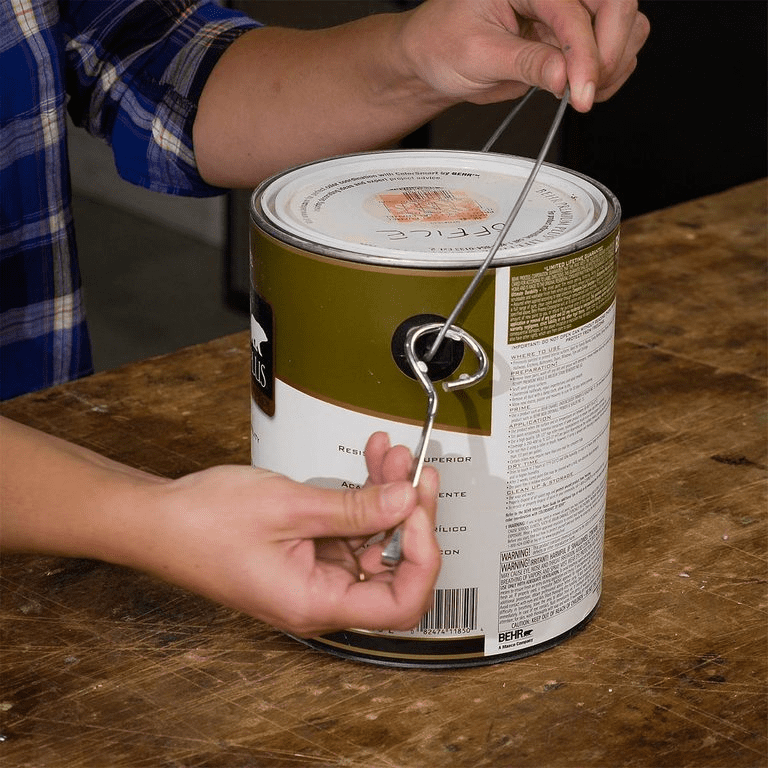
The paint can opener is not a very large tool, and it is easy to misplace among our other tools. We have a hack that will help you keep your paint opener always handy. Bend the loop of the opener to create a small space, and you can hook the opener on the handle of the paint bucket.
Use a sneaker to clean sandpaper
Like we’ve said numerous times before, sandpaper is one of the most used materials in the workshop. Inevitably, the sandpaper will eventually get dirty and worn from all the scraping and abrasion over the years and from all the projects.
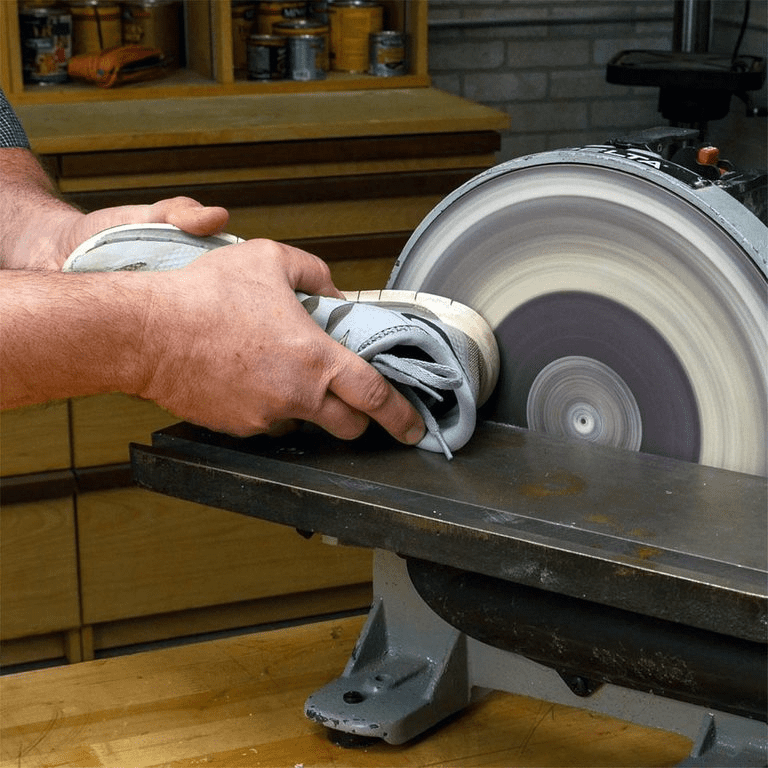
You don’t have to throw out the sandpaper that is already dirty. Instead, we have a way to keep your old sandpaper good as new; all you need is one of your old sneakers. Put the rubber part of the sole on the sandpaper and it’ll work like magic.
How to magnetize a screwdriver
Sometimes, we have to work with tiny screws and screwdrivers, and we might have issues getting to the screw or holding it in place while we try to screw it in. We have a way that you can handle your screws easily.
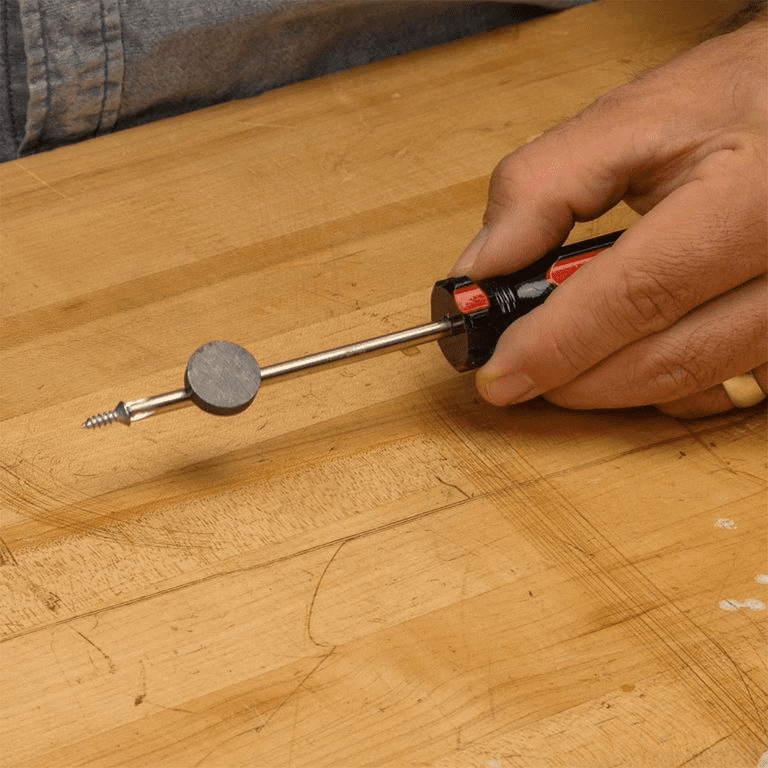
You can magnetize your screwdriver. This makes it super easy to pick up screws with just one hand. All you need to do is place a manet on your screwdriver for a few minutes. After doing this, your screwdriver starts attracting the little screws.
Hands-free light hack
Sometimes, we need to make use of light and work at the same time, but we only have two hands, and getting the light in the right position might be difficult. We have something that you can do in this situation.
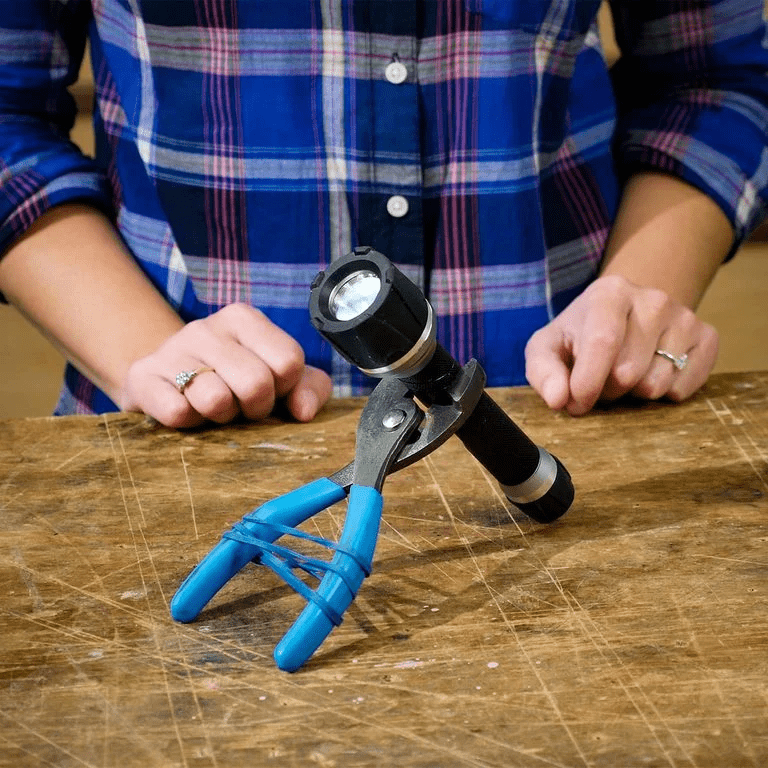
You can use your hands freely without having to worry about holding your light in the right place. All you need to do is get a pair of pliers, a rubber band, and your flashlight. Fix the flashlight into the mouth of the plier, and hold the handles with a rubber band.
Brush with a drill
We’ve been talking about the application of different hacks in the workshop so far, but what about hacks that can be used domestically while using tools from the workshop? Let’s take a look at one in which we think is quite clever.
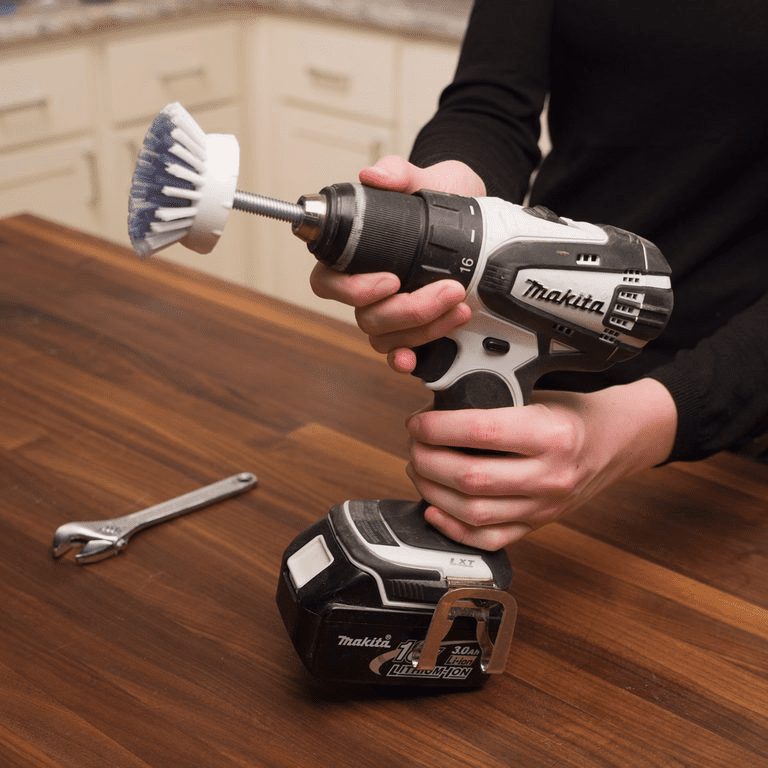
It can be quite tasking using our hands and a brush for cleaning, but one good thing is that there is a hack we can now use to remove the stress from brushing. What you need to do is attach a brush to the end of a drill, and you’re good to go.
Hammer lumber splitter
Splitting wood is not a task that can be done with just any tool, and an axe is the best tool for the job. But what happens when we can’t find our axe and need the wood. Let’s see what else we can do to fix this problem.

You’ll be surprised to discover that there is another tool you can use for splitting wood, and it is probably sitting there on your workbench idle. You can actually use the claw of your hammer to split wood effectively.
Makeshift whisk
We know movies and shows may have ruined the reputation of zip ties thanks to abductions, hostage situations, and such but trust us, that’s not all they can do. If you are a fan of zip ties, you will admit that they can come in handy for quite a number of tasks around the house.

For example, you can make a whisk with a pencil, 3 zip ties, and a hand drill. Just start by fastening your zip ties on the pencil. Ensure that they’re all facing different directions, then cut them to an appropriate length. Next, fix the pencil on the drill, turn it on, and you’re done.
